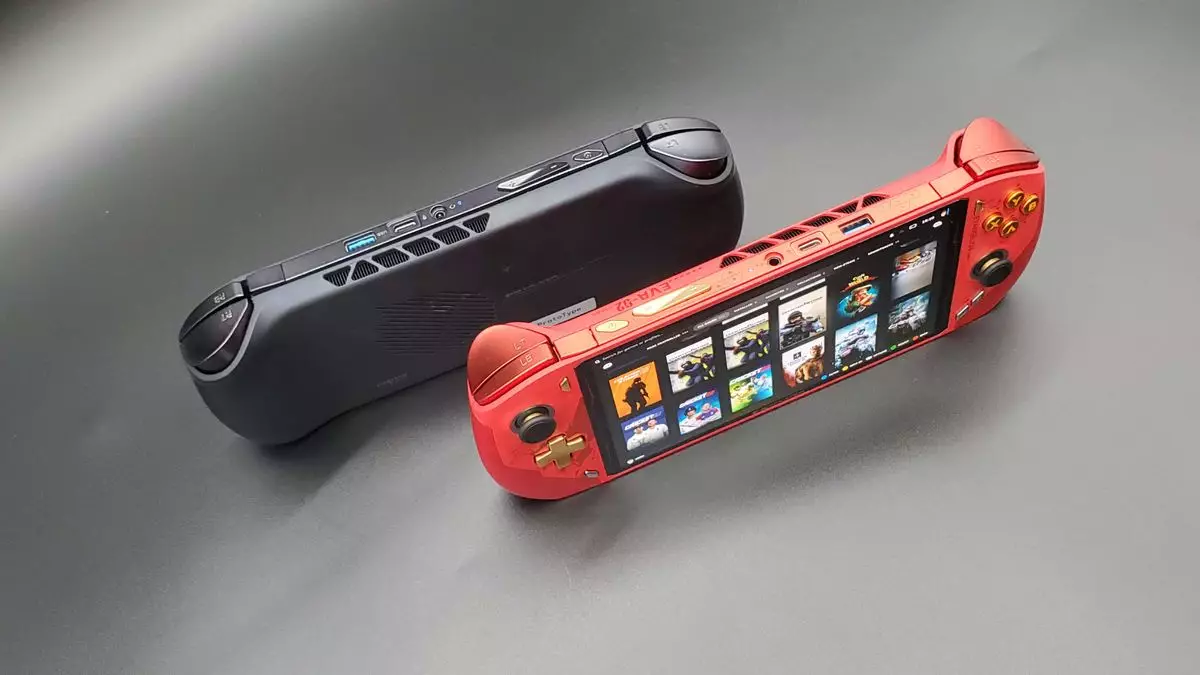AMD’s foray into the realm of handheld gaming has led to an intriguing development, the Ryzen AI Z2 Extreme, a sequel that promises to revolutionize mobile gaming by integrating a neural processing unit (NPU). The introduction of such technology raises profound questions about the significance and utility of an NPU in handheld devices. Traditionally, gaming handhelds have prided themselves on optimizing performance without weighing down the device with unnecessary features. So, why does an addition like an NPU matter? This is a crucial inquiry in light of AMD’s strategic direction, as their ‘Z’ designation points squarely at handheld optimizations specifically formulated for gaming enthusiasts.
The Z2 Extreme, boasting full capabilities with 16 RDNA 3.5 graphics cores and eight Zen 5 CPU cores, represents a significant leap from its predecessors. It melds power and efficiency, and in an industry where every gigahertz matters, such refinements cannot be trivialized. However, what makes the Z2 Extreme a hot topic of discussion is its previously disabled NPU which is set to be activated in this iteration. While the premise of having an NPU sounds exhilarating, its actual implementation in gaming contexts remains nebulous.
The Complexity of an Evolving Chip Family
To comprehend the allure of the Ryzen AI Z2 Extreme, one must navigate through a convoluted landscape of AMD’s lineup. The Z2 series showcases a confusion of architectural choices, featuring APUs that are not only of differing generations but are constructed from disparate silicon sources. The three models in the Z2 family—Z2 Extreme, Z2 Go, and the plain Z2—are distinct, reflective of AMD’s experimental approach to handheld integration. While the Z2 Extreme directly correlates with the Strix Point architecture, the Z2 Go is a remnant of the older Rembrandt APU. As consumers intersect with these various product offerings, clarity diminishes, leaving potential buyers to sift through a mishmash of marketing terms and distinct capabilities.
This varying architecture within the same family understandably mystifies consumers and developers alike. Each APU, despite being packaged under the Z2 banner, speaks to different performance metrics and gaming experiences. Therefore, potential users must consider not just the hardware specifications but the underlying capabilities of each architecture and how they translate into real-world gaming advantages.
AI’s Role in Enhancing Handheld Gaming Experiences
The discussion then pivots towards the NPU’s practical applications in gaming. At the heart of AMD’s decision to enable the NPU is undoubtedly the rising trend of AI integration across tech products. Gaming devices are increasingly marketed with AI capabilities, and enabling the NPU on the Z2 Extreme could afford manufacturers the opportunity to tout their devices as “AI-ready.” This can include compatibility with advancements in AI gaming environments, such as supported features in Microsoft’s Copilot+.
Nevertheless, the actual advantages of activating the NPU hinge largely on the emerging landscape of AI services. Presently, many AI applications, including popular tools like ChatGPT, operate through cloud frameworks rather than locally on devices. Until there is substantive investment in local AI processing for gaming, the NPU’s immediate benefits might be relegated to theoretical advantages rather than tangible performance boosts in gameplay.
The Battery Life Conundrum
As the excitement for the Z2 Extreme grows, a pertinent concern surfaces regarding battery life. High-end handhelds often grapple with the challenge of providing extended playtime without frequent recharges. Meanwhile, the introduction of an NPU signals an additional power draw alongside the CPU and GPU. The interplay between performance enhancements and energy consumption creates a delicate balancing act for device manufacturers.
Optimizing battery life while pushing cutting-edge technology to its limits could prove to be a daunting task. While the inclusion of an NPU could elevate the gaming experience, an increased load might conflict with the fundamental appeal of handhelds: their portability and ability to function for hours on end without tethering.
AMD’s ambition of integrating AI through the Z2 Extreme raises both excitement and skepticism among consumers and industry experts. As handheld gaming continues to evolve, the true test will be whether these innovations genuinely enhance user experience or simply contribute to an unsustainable thirst for power in a compact device.


Leave a Reply